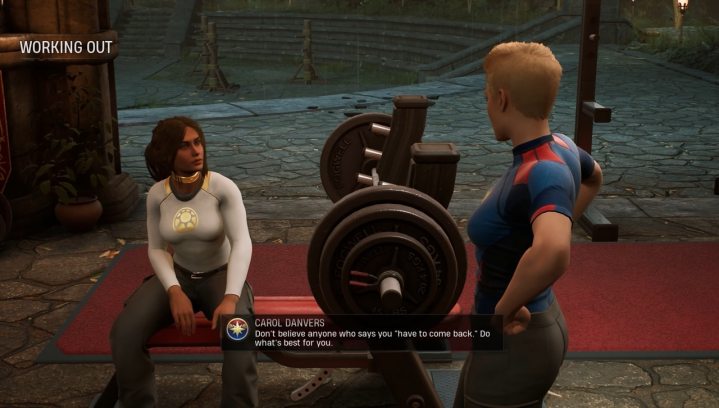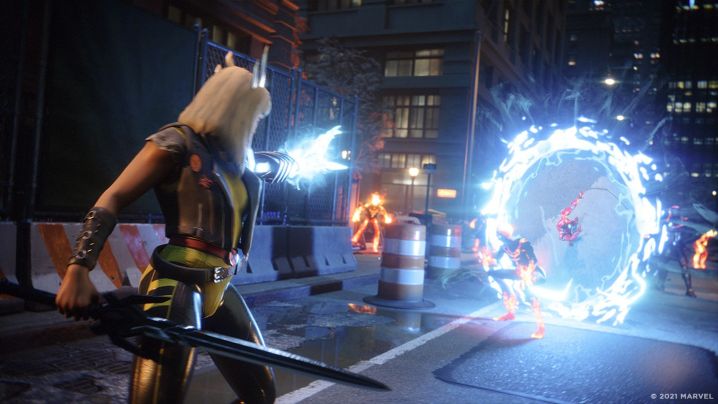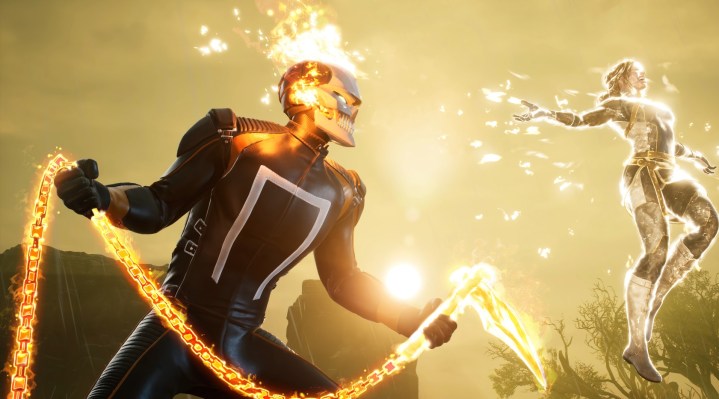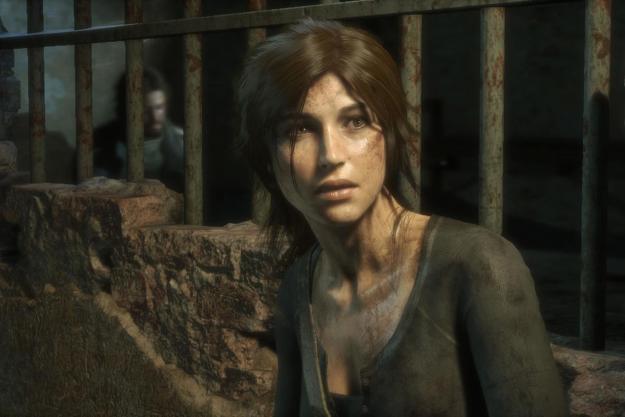Marvel’s Midnight Suns is a new tactical RPG title from 2K and Firaxis games, starring some iconic (and obscure) heroes from the Marvel Comics universe. Despite bearing some resemblance to XCOM, it’s a bit of a genre mash-up. It has a deckbuilding component and even contains an interaction system that might remind you of Persona’s social links.
Overused Persona comparisons can always lead to eye rolls in 2022, but they’re accurate in the case of Marvel’s Midnight Suns. In an interview with Digital Trends, the team behind the game shed some light on some of its surprising inspirations that go far beyond XCOM. That makes for a unique game that feels like a baby born of three of my favorite things.
Marvel Comics, Fire Emblem, and Persona
While I noticed a link to games like Persona when seeing the game in action, I was surprised to learn I was even more on the nose than I thought when I spoke to designer Joe Weinhoffer and Creative Designer Jacob Solomon. Yes, the tactical strategy side immediately appealed to me, but seeing a Western RPG where you can join book clubs, hang out at that iconic X-Men pool, and grow relationships that in turn buff your party is something unseen in the West.
“Japanese RPGs have done relationships as a gamified system so well for a long time,” Weinhoffer tells Digital Trends. “It’s something we messed around with a little bit in the XCOM games, but never to this extent. So we looked to Fire Emblem and Persona for inspiration on how they gamify relationships in such a great way where it adds a new system to the experience.”

The inspiration was clear to me upfront, but hearing it from the designers directly opened my eyes to how unique this title is for Western RPGs. Not only that, though, it’s also fitting for a Marvel game. Every comic fan knows these heroes aren’t purely fighting machines who exist in action scenes. In fact, their downtime is where you get 75% of their character development, and seeing it finally placed in a Persona-style system has me excited. The additional powers and buffs that come with that are simply a bonus.
By comic fans, for comic fans
It became clear during my chat with the designers that the Marvel universe was in caring hands. When Weinhoffer told me that he made sure there was a swimming pool to chat with the heroes at just because it was such a staple to old X-Men comics, I knew the game was being handled by true fans.

Going back to the beginning, Midnight Suns originally played a lot closer to XCOM — that was until the team realized the mold didn’t fit thematically for larger-than-life heroes. Solomon, Weinhoffer, and the rest of the team ditched that version and did a physical tabletop version of the game using Heroclix, an old board game that starred miniatures of Marvel heroes. It’s a reference that sent me back to my childhood, where I’d always see those little figures in my local comic shop.
“We had some of the environment objects in there where that’s where it’s like the car in the middle.” Soloman says. “Heroes could use an ability to jump off of the car or pick it up, etc. So a lot of the interactive environment stuff was in since that initial version.”

Of course, you can’t just copy this, add it to an XCOM clone, and call it a day. The duo discussed this old version, which featured the classic strategy game mechanic, hit chance. That entails having a specific percentage chance of hitting an enemy. Solomon stated that this didn’t fit thematically, bringing up how goofy it is for Captain America or Iron Man to miss a hit on a foe.
“These are people with superpowers. They don’t need to worry about hiding and sneaking around and having more of that underdog approach,” Solomon says.
Perfectly balanced
As the team pulled away from the XCOM formula, it chased a new design philosophy that would pit heroes against armies of enemies. To balance for the fact that heroes would now hit 100% of the time, the card system was born.
People are going to find some broken shit where we’re just like “Oh my God,” but that’s kind of the fun.
“Cards are a universally understood and known mechanic,” Solomon says. “So we decided to represent these hero abilities as cards and just kind of get dealt a random set of abilities at the start of a turn. We quickly felt really good and excited about them as a design element because you can attach a lot of gameplay information about abilities to every card. At the end of the day, we ended up kind of flipping the XCOM formula on its head cause it’s a random pull but you know exactly what your card does in Midnight Suns. They add tactical complexity, surprise, and interest in solving a puzzle every time you go into a mission.”
This led us to the core philosophy of Midnight Suns‘ battle system: Solomon and Weinhoffer describe missions as puzzles. You’re thrown into a random location with the team of your choice, pitted against random foes that might even feature a big-time comic enemy, and are dealt your selected cards at random. It’s a never-ending puzzle in the form of a strategy game and it actually is one of both designers’ most anticipated pieces to get into players’ hands. Why? Because they can’t wait to see what kind of broken hero and card combinations players create to solve these puzzles.
“You can use your individual hero decks and ability loadouts to really synergize with one another,” Solomon says. “Like bringing Doctor Strange because he’s going to generate a ton while Ghost Rider spends it all for big splashy high damage attacks.”

“Yeah, people are going to find some broken shit where we’re just like ‘Oh my God,’ but that’s kind of the fun,” Weinhoffer continued. “That’s the joy of games like this. And it’s also made even better by the fact that at every turn you can’t exactly predict what abilities are there thanks to the card system. So it’s cool to break the game every once in a while to where it’s like when everything lines up just right.”
Based on what I’ve seen and heard, Marvel’s Midnight Suns is lining up to be one of the biggest surprises of the year. The fact that I get to talk with Venom and Magik like I’m playing Persona, control them in XCOM-like battles, and potentially come up with Exodia card combos like I’m playing Yu-Gi-Oh? I’m sold.
Marvel’s Midnight Suns will be released for PC, PlayStation 5, and Xbox Series X/S on December 2. PS4, Xbox One, and Nintendo Switch versions are in development.




